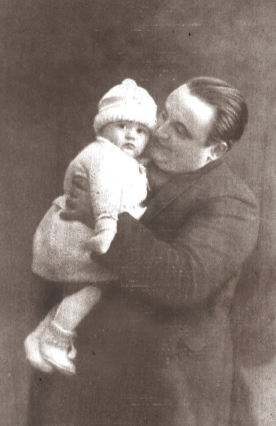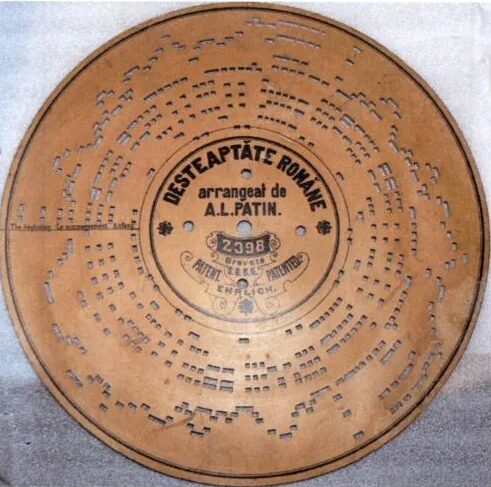Welcome, first-time reader!
This is where your journey in Romania begins with memories from the health crisis period and present time events.
You must have heard of Dracula. You must have listened to Enescu’s fascinating music. Anybody who loves arts must have seen the works of one of the most influential sculptors of the 20th century, Constantin Brancusi. There is no need to mention the iconic personalities of Nadia Comaneci, Gheorghe Hagi, Ilie Nastase or Simona Halep. But … if you have never been really interested in the culture of Romania, here, on this page, you’ll get an overall idea about the country, about who we are, what we like.
Everything in a nutshell. Let me start with a piece of music to introduce you to the Romanian spirit. Listen to the Lark!
1. BUCHAREST
The capital city of Romania is the largest in the country and its cultural, industrial, and financial centre, as well. According to a legend, the city was founded by a shepherd named Bucur. Bucharest was first mentioned in 1459 and the residence of prince Vlad Tepes (Vlad III Dracula, also known as Vlad the Impaler)
Let’s take a stroll
This is how spring started in Romania in 2020: February – first preventive measures; March 8 – Ban on public gatherings, school closures; March 16 – The Romanian President Klaus Iohannis announced that a state of emergency was declared as of Monday on the entire territory of Romania for 30 days; March 24 – the government announced Military Ordinance No.3, instituting a national lockdown. Enjoy the walk through the park!
HOW TO GET THERE Address: 62 Câmpia Libertății Street, Bucharest, Metro: M1 yellow line Titan, Bus; 70, 79, 311, 330 I.O.R
Bucharest by night



Designed by the Romanian architects Ioan Mincu and Albert Bally between 1890 – 1895.

Built between 1884 şi 1890 by the French architects Cassien Bernard and Albert Galleron.

Source: The Fagaras Mountains
Flows through Bucharest from north to south.
It passes under the Unirii Square, through some huge pipelines, under a road underpass and over two metro stations.
2. SOUTHERN ROMANIA
The purpose of this unit is to learn about Southern Romania, also known as Wallachia, a name linked to its ancient inhabitants. This zone covers the regions of Oltenia and Muntenia and stretches between the Southern Carpathians and the Danube. We expect you to share with the other members photos to illustrate your experiences as travellers in this part of Romania.
GIVE ROMANIAN FOOD A BITE! YUMMY!

Photo credit: http://culoaresiarome.ro/wp…/uploads/2018/08/DSC06706.jpg
ONCE UPON A TIME …

More than 100 villages and towns have disappeared from the map of Romania in the last 60 years. Here are two examples frim this region:
- Italieni (Italians) is a village in Bucovat commune, Dolj. It was founded by three Italian families immediately after the reign of King Carol I (20 April 1866 – 14 March 1881). Excellent builders, farmers and cooks, the Italians used to e
migrate, pushed by poverty, to Romania, looking for better living conditions. The village was demolished by the communists and the descendents of the founding ancestors moved back to Italy. - Ada-Kaleh Island (watch the video in Comments) was a small island on the Danube that was surmerged during the construction of the Iron Gates Hydroelectric Plant in 1970. It was 3 km downstream of Orsova.
The Turkish population lived on the cultivation of tobacco and fishery, and later on tourism. The island’s population ranged between 600 and 1,000 inhabitants. Before the island was covered by the waters of the dam, some of the people moved to Constanta, and many were invited by Prime Minister Demirel to move to Turkey.Photo credit: Ziareromania.roDone
TRADITIONAL DANCES
“The Căluşarii”, the fastest traditional dance for men from Southern Romania. The movements imitate the galloping of a horse. The dancers carry clubs, a flag and a horsehead, but the whole show is more than an acrobatic dance, it looks like a ritual:of strong, determined men who swear to fight and protect each other.
THE ROMANIAN FOLK CULTURE (embroidery patterns)
If one really wants to learn about Romania, one should study about folklore and its relationship with the learned culture. The historical conditions contributed to the preservation of our rural traditions from ancient times. Their uniqueness, richness and variety make music, dances, festivals, costumes and interior design fascinating.The traditional Romanian costumes and embroidery deserve a separate chapter. The line of the design, the theme and the chromatics not only reflect the ethnic identities but also describe the historical and artistic values of the Romanian people. Their source of inspiration can be traced everything that surrounds us: nature, vegetation, animals, geometric figures and shapes. The most often met is the cross, the stars, the sun, the sunflower, the rose, the spiral, the wheat and the leaves, or the fruits. These patterns mostly symbolize the people’s connection with the divine energy, fertility, vitality, peace, life, pregnancy and wealth.The fabrics used, most often manually woven, are flax, hemp, silk and cotton.It’s interesting and inspiring to read about Romanian folkart as seen through the eyes of great painters and genuine art lovers:Martine Claessens, interior designer, graduate from the prestigious Academy of Fine Arts in Antwerp, Belgium, fashion design
(https://martineclaessens.com/…/15/romanias-secret-language)The site of the Honorary Consulate of Romania in Boston
(http://www.roconsulboston.com/…/Culture/Matisse.html)+4Done







Topîrceanu, a poet for all seasons





The rock church of Namaiesti, jud, Arges
5 km to the north-east of Campulung43 km from Curtea de Arges
Namaesti Monastery
Location: Valea Mare Pravăț, județul Argeș, Coordonates: 45°18′16″N 25°06′36″E45°.









Busteni, jud. Prahova
The Cantacuzino Castle is situated on Zamora Street in Bușteni, Romania. Construction (conducted by the architect Gregory Cerchez at the request of Prince George Grigore Cantacuzino: completed in 1911





Orsova, jud. Mehedinti
Veterani cave, Mraconia Monastery – founded in 1523

The rock sculpture of Decebalus, the last king of Dacia (r. AD 87–106) 

3. WESTERN ROMANIA
The West is one of the eight development regions in Romania created in 1998. It does not have administrative power. It is divided into four districts: Arad, Caras-Severin, Hunedoara and Timis. Ethnic groups: Romanians (86%), Hungarians, (6.7%), Roma (2.5%) and Germans (!.4%) This unit will comprise information you don’t want to miss about this region: tourist attractions, Romanian culture and traditions.
TIMISOARA 2021
What is it like to live in Timisoara? Some say it’s awesome. It’s exciting to be a tourist, as well and many have already planned to visit this multicultural city in 2021 and have registered for conferences, workshops, exhibitions and booked tickets for concerts and festivals that are going to be organized in 2021.Timisoara is the European Capital of Culture 2021 for Romania. The motto of the event is inspired by the metaphor of light “Shine your light – Light up your city!”. This refers to Timisoara having been the first place in Europe to have electric street lighting (1884).Timisoara is now the second Romanian city to be chosen as a European Capital of Culture, after Sibiu received this honour in 2007.Let me take you for a tour around Timisoara.
UPDATE: The event was postponed due to the health crisis, but was not cancelled. So, be prepared to visit the historical capital of Banat! You’ll never get bored.
https://timisoara2023.eu/ro/%C8%99tiri/deschiderea-timi%C8%99oara-2023-un-weekend-pentru-un-an/
Herculane Spa Resort, Caras-Severin

4. CENTRAL ROMANIA
This part is situated within the Carpathian Mountains and is made up if sic counties: Alba, Brasov, Covasna, Cluj, Harghita, Mures and Sibiu. The relief includes parts of the three branches of the Romanian Carpathians and a rich hydrographic network and natural lakes. Ethnic groups: Romanians (64.3%), Hungarians (30.9%), Roma (4.7%) and Germans (0.4%).
Cluj-Napoca during COVID-19, beautiful, more attractive than ever
Cluj-Napoca is the unofficial capital of the Transylvania region. Home to universities, vibrant nightlife and landmarks dating to Saxon and Hungarian rule, the city is the second largest city in Romania.Discover the best time and places to visit in Cluj if you plan to spend a holiday there.
Memories form the pandemic (April 2020)
Photo credit: Nicu Checiu
The Transfagarasan Road, jud. Arges
1.Paved mountain road, 90 km long: Constructed: 1974
2. Balea Lake Chalet, jud. Sibiu
3. Lake Vidraru – artificial lake created in 1965 by the construction of the Vidraru Dam





Piata Sfatului, Brasov, jud.Brasov
The Council SquareAnnual markets used to be organized since 1364.
The Black Church from Brasov is over 600 years old and one of the largest medieval churches in this part of Europe.



5. NORTHERN ROMANIA
This unit will become a collection of outstanding images and traditions from three separate units: Moldavia, Bucovina and Maramures.
“I’m a Maramures kid” is the song that will give you the complete image of the region: costumes, music, attitude


6. DOBROGEA
It is home of the Danube Delta and the Black Sea resort. T his will be about outdoor activities and relaxation, food and wine, places to explore, museums and a lot of interesting traditions.
Porto Franco, Sulina
Sulina is a museum-town itself, formed of shadows and relics, hundreds of legends and tourist attractions.I’ve selected two sites for you, one in English (below), and the main one in Romanian. Hope you’ll enjoy the romantic or the terrifying stories buried in the Sulina Maritime Cemetery. This is a multi-ethnic cemetery, divided into plots for different ethnic groups:Greeks, Turks, Russians, Romanians, Jews, There are British travellers and Maltese sailors and pirates buried here.These are good stories to make one’s evenings perfect.
https://www.romaniajournal.ro/…/sulina-maritime…/
https://discoverdobrogea.ro/cimitirul-multietnic-din-sulina-povesti-cu-pirati-printese-si-tineri-indragostiti/?fbclid=IwAR1_CLtPlU0iGXuuHgoTK_nmJvMuWGi_4bu5ovugBWDQeGsKuvRioqXJzn0
Enisala, Tulcea
Enisala fortress is located at about 2 km away from the village. The citadel was first mentioned under the name Yeni-Sale in the 15th century.

READ MORE:
As a first time visitor to Romania, you might want to get familiar with the historical regions of Romania or you might enjoy a virtual visit to an iconic building in Moldova.






















You must be logged in to post a comment.